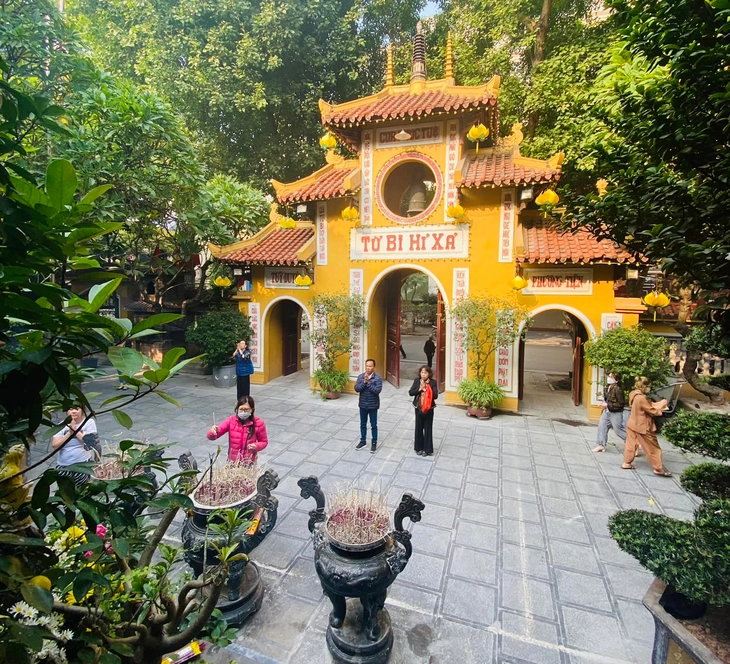
Quan Su Pagoda Hanoi - Photo: Quan Su Pagoda Fanpage
Quan Su Pagoda: A sacred pagoda with hundreds of years of history
According to the Buddhist Information Portal of the Vietnam Buddhist Sangha, Quan Su Pagoda was built between the 14th and 15th centuries, founded by King Le The Tong. This is one of the most famous ancient temples in Hanoi, and is also the headquarters of the Central Office of the Vietnam Buddhist Sangha.
Quan Su Pagoda is the place chosen to organize many important events of the Vietnam Buddhist Sangha and the world such as conferences, seminars on Buddhist studies, and the influence of Buddhist thought during the Tran Dynasty on Vietnamese culture.
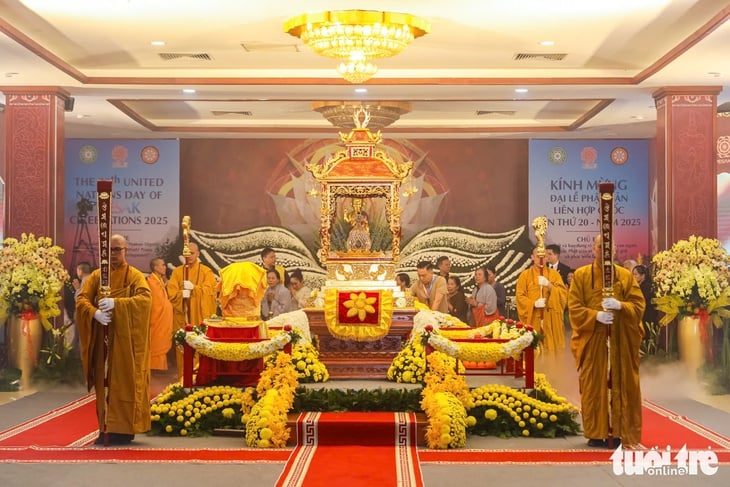
Buddha's relics are enshrined at Quan Su Pagoda - Photo: DANH KHANG
The temple is located at 73 Quan Su Street, Tran Hung Dao Ward, Hanoi City, about 1km from Hoan Kiem Lake. This sacred temple has a harmonious combination of "inner public, outer private" layout. The door frame is designed with precious wood, creating a harmonious, ancient look for the temple.
Quan Su Pagoda consists of a three-door gate, main hall, library, guest house, lecture hall and monk rooms. The three-door gate of the pagoda is designed with 3 roofs, in the middle is the bell tower, the dome is covered with red fish scale tiles.
The main space of the pagoda is built in a square shape, consisting of 2 floors, surrounded by a long corridor. The Tam Bao Palace is located on the 2nd floor. The Buddha shrine is solemnly decorated with large, gilded statues placed on each step.
The library, guest rooms, lecture halls and monks' quarters are arranged on both sides and in the back yard of the temple.
Buddha's relics were enshrined on the first floor of Quan Su Pagoda's hall on the afternoon of May 13.
Monks, Buddhists and people worship from 7:00 am to 9:30 pm on May 14, 15 and 16.
Morning of May 17, ceremony to send Buddha relics to Tam Chuc Pagoda.
Tam Chuc Pagoda: The largest pagoda in Vietnam
According to the Buddhist Information Portal, Tam Chuc Pagoda complex is nearly 5,100 hectares wide with nearly 1,000 hectares of lakes, 3,000 hectares of rocky mountains, natural forests... and many valleys.
Tam Chuc Pagoda is located in Kim Bang, Ha Nam , covering an area of 144 hectares with many constructions such as: Ngoc Pagoda, Tam The Palace, Phap Chu Palace, Quan Am Palace, Tam Quan Gate, International Conference Center...
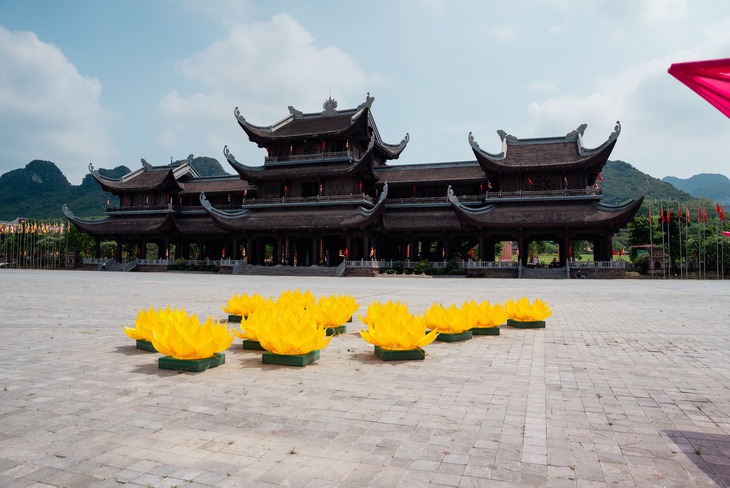
Tam Chuc Pagoda is about to enshrine Buddha's relics - Photo: Tam Chuc Pagoda Fanpage
Ngoc Pagoda is located on the top of That Tinh Mountain, 468m high, built with stone blocks stacked together into a block weighing 2,000 tons, crafted by Indian artisans, and is considered a masterpiece of stone architecture.
Tam The Temple is 45m high with 3 curved roof floors, with Vietnamese temple architecture, 5,400m² floor area, enough to welcome 5,000 Buddhists to worship together. Phap Chu Temple has 2 curved roof floors, 31m high, 3,000m² floor area.
Quan Am Temple is 30.5m high, with a floor area of 3,000m². Tam Quan Gate has 3 curved roof floors, is 28.8m high, and has three floors of 3,558m².
The structures of Tam Chuc Pagoda are a harmonious combination of the past and the present. Tam Chuc Pagoda was recognized as a national tourist site in 2013.
Buddha's relics will be enshrined at Tam Chuc Pagoda from May 17 to 21.
On the afternoon of May 21, the ceremony to send the Buddha's relics to Noi Bai International Airport to return to India.
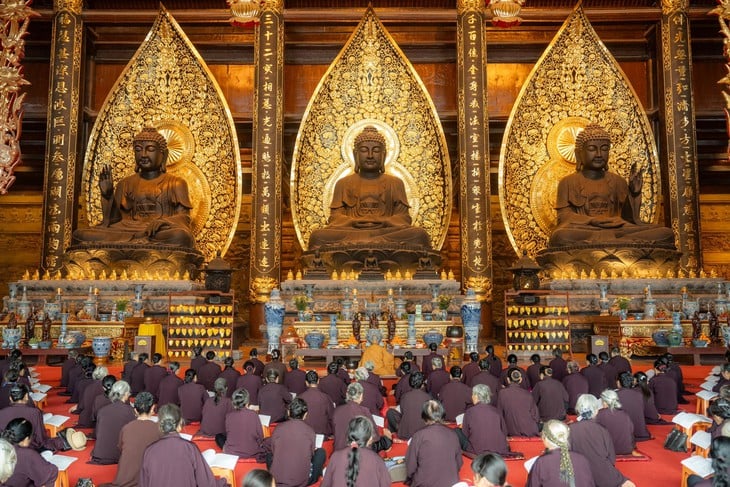
Three statues of Buddha Tam The are placed in the main hall - Photo: Tam Chuc Pagoda Fanpage
Thanh Tam Pagoda: A peaceful and serene destination
According to information from the United Nations Vesak 2025 handbook , Thanh Tam Pagoda was built in 1956 on land donated by layman Ngo Chi Binh.
Initially, Bat Buu Phat Dai was built to enshrine a 4.8m high, 4-ton statue of Buddha Shakyamuni, placed on a 1.2m high lotus platform.
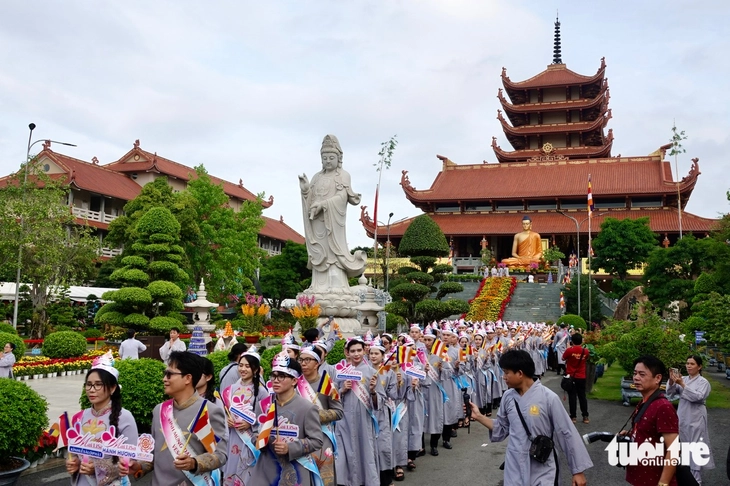
After worshiping Buddha's relics, a group of visitors took souvenir photos at Thanh Tam Pagoda before leaving - Photo: TTD
In 1965, the war destroyed almost the entire structure. Although the temple was leveled, the Buddha statue still stood firmly in the middle of the deserted field. Because of this image, people called it the Lonely Buddha Temple.
After 1975, this place attracted many tourists to come and worship and pray for national peace and prosperity.
The Vietnam Buddhist Sangha has rebuilt Thanh Tam Pagoda into an important study center for nuns at the Vietnam Buddhist Academy in Ho Chi Minh City. Today, the pagoda has many study areas, with hundreds of nuns living here.
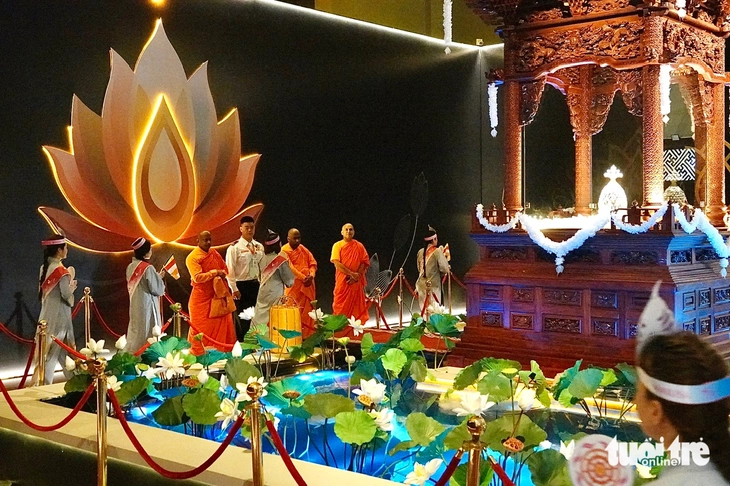
People respectfully worship Buddha's relics at Thanh Tam Pagoda - Photo: TTD
With a quiet, peaceful space, Thanh Tam Pagoda is not only a center for studying and practicing but also an ideal spiritual destination for Buddhists and tourists from near and far.
Thanh Tam Pagoda is the first place in Vietnam to enshrine Buddha relics for people to come and worship. From May 3 to 8, millions of monks, nuns, Buddhists and people came to worship.
From May 8 to 13, Buddha's relics were enshrined at the Buddhist Exhibition Center on top of Ba Den Mountain - the highest mountain in the South, 986m high.
In this area, there is a statue of Bodhisattva Guanyin, crafted from 170 tons of bronze, using the most advanced high-pressure pressing technology in Europe.
The statue holds many records such as: the tallest bronze Buddha statue in Vietnam on the top of the mountain, and the tallest bronze Buddha statue in Asia on the top of the mountain.
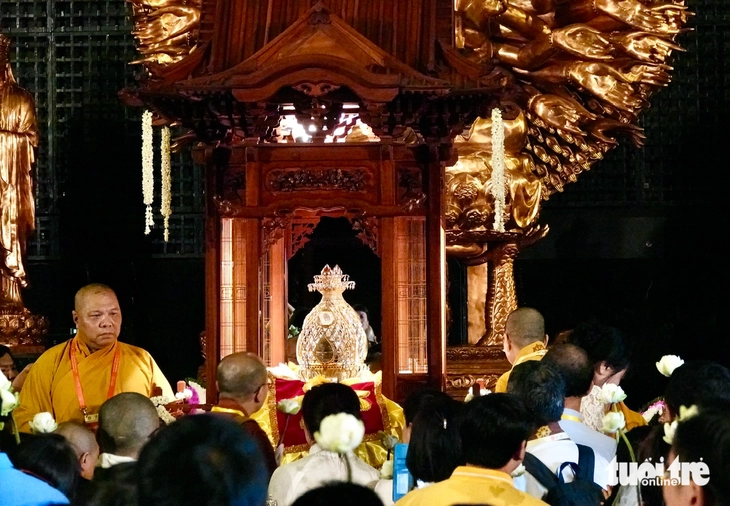
Buddha's relics enshrined on Ba Den Mountain from May 8 to 13 - Photo: TTD
Source: https://tuoitre.vn/4-ngoi-chua-duoc-ton-tri-xa-loi-phat-tai-viet-nam-co-gi-dac-biet-20250515050402202.htm





![[Photo] Ho Chi Minh City holds funeral for former President Tran Duc Luong](https://vphoto.vietnam.vn/thumb/1200x675/vietnam/resource/IMAGE/2025/5/24/9c1858ebd3d04170b6cef2e6bcb2019e)

![[Photo] Party and State leaders visit former President Tran Duc Luong](https://vphoto.vietnam.vn/thumb/1200x675/vietnam/resource/IMAGE/2025/5/24/960db9b19102400e8df68d5a6caadcf6)





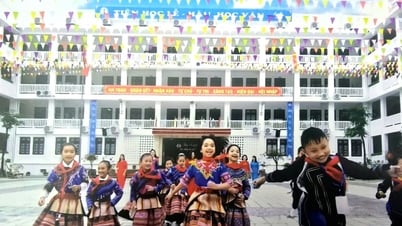

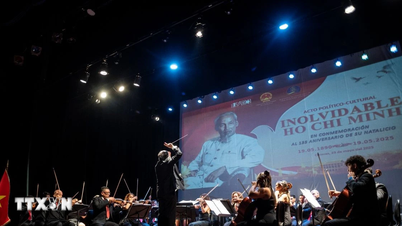












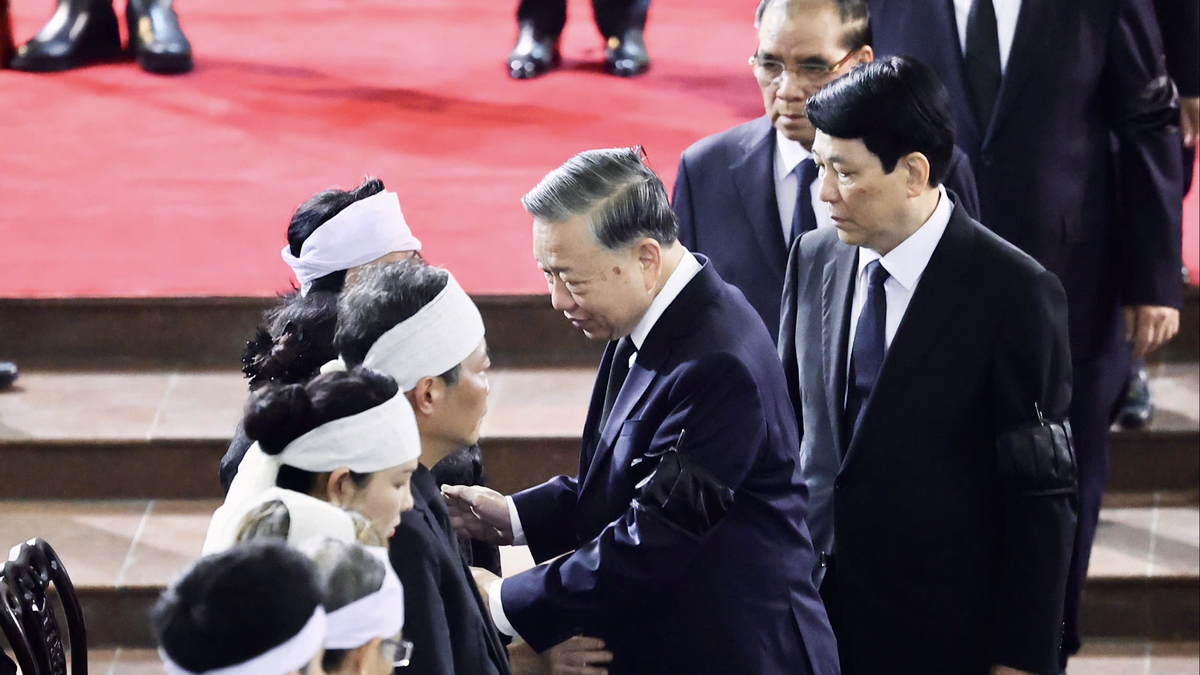










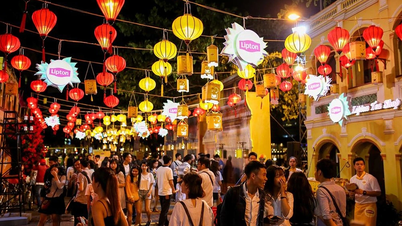




















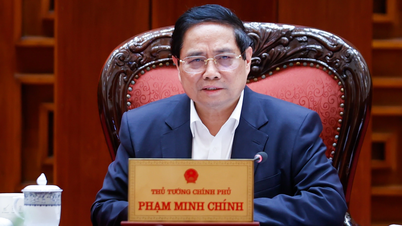



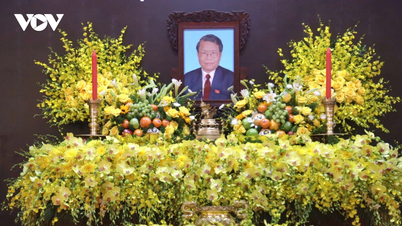









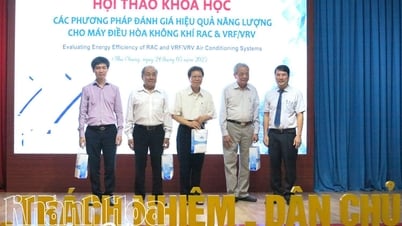

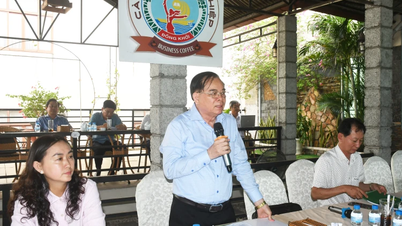

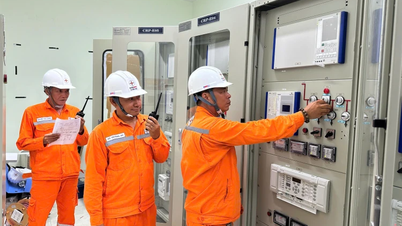


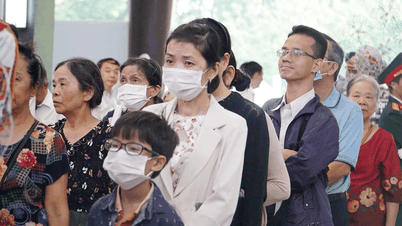












Comment (0)